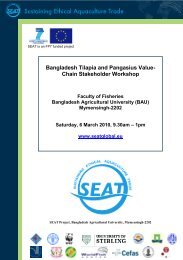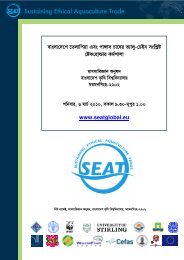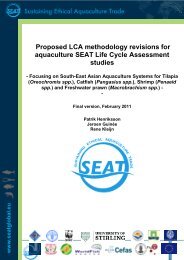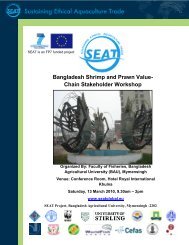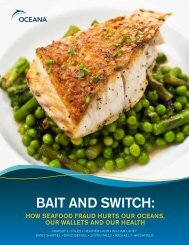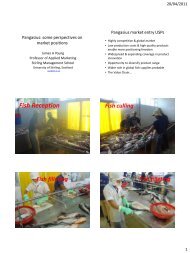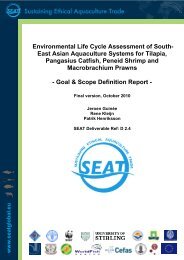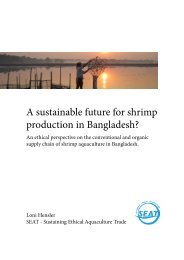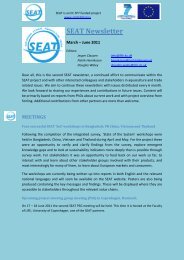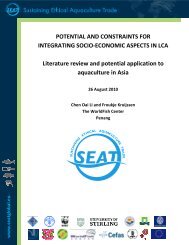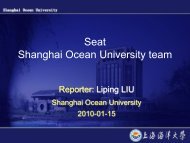D4.1 Review of Environmental Models - SEAT Global
D4.1 Review of Environmental Models - SEAT Global
D4.1 Review of Environmental Models - SEAT Global
Create successful ePaper yourself
Turn your PDF publications into a flip-book with our unique Google optimized e-Paper software.
suite has been developed for use in larger businesses and has been used with confidence for<br />
decision making. The other s<strong>of</strong>tware suites do not have any major disadvantages in relation<br />
to the Powersim suite and even spreadsheets may be used for linking model data to a GIS<br />
program. Using an object-oriented dynamic s<strong>of</strong>tware package has its advantages such as the<br />
ability to visually display the steps undertaken to produce the final model as well as the<br />
ability to display the results graphically. The majority <strong>of</strong> the visually dynamic s<strong>of</strong>tware has a<br />
user friendly interface, however it is notable that the Powersim suite has a large array <strong>of</strong><br />
tools to assist in model making.<br />
Three models which have potential to be used or built upon for the production <strong>of</strong> the <strong>SEAT</strong><br />
environmental models include the APEM, IAAS and MOM. These have proven to be effective<br />
in their application and have been developed in a general capacity allowing application to a<br />
multitude <strong>of</strong> culture methods, specifically ponds. Although the MOM model was originally<br />
developed for cage aquaculture, models are being adapted all <strong>of</strong> the time and MOM is no<br />
exception.<br />
Page 21



